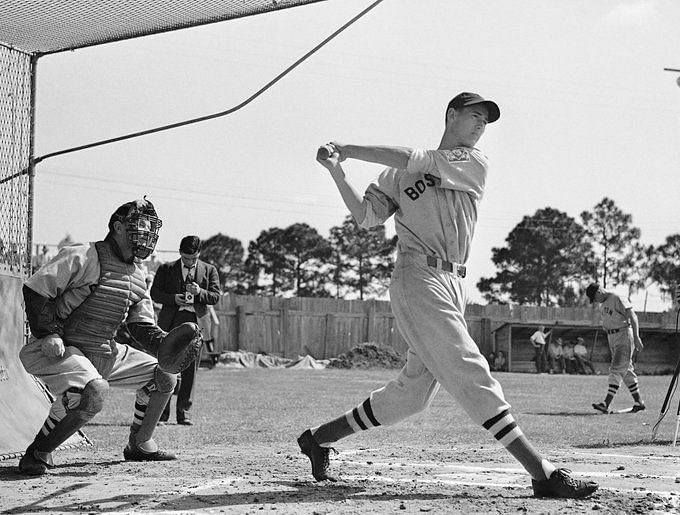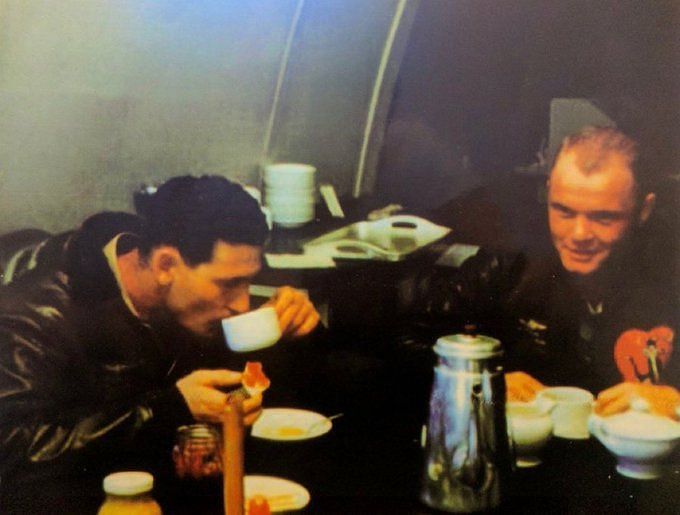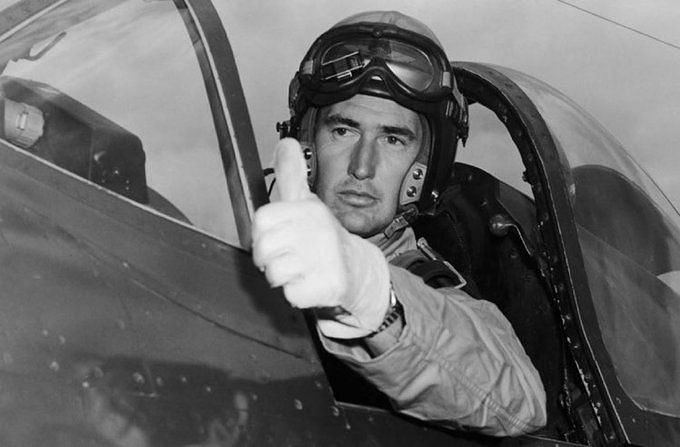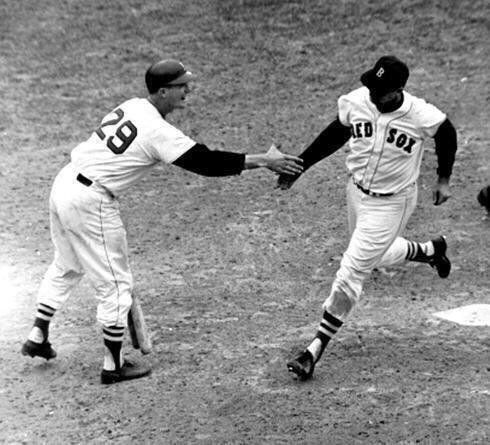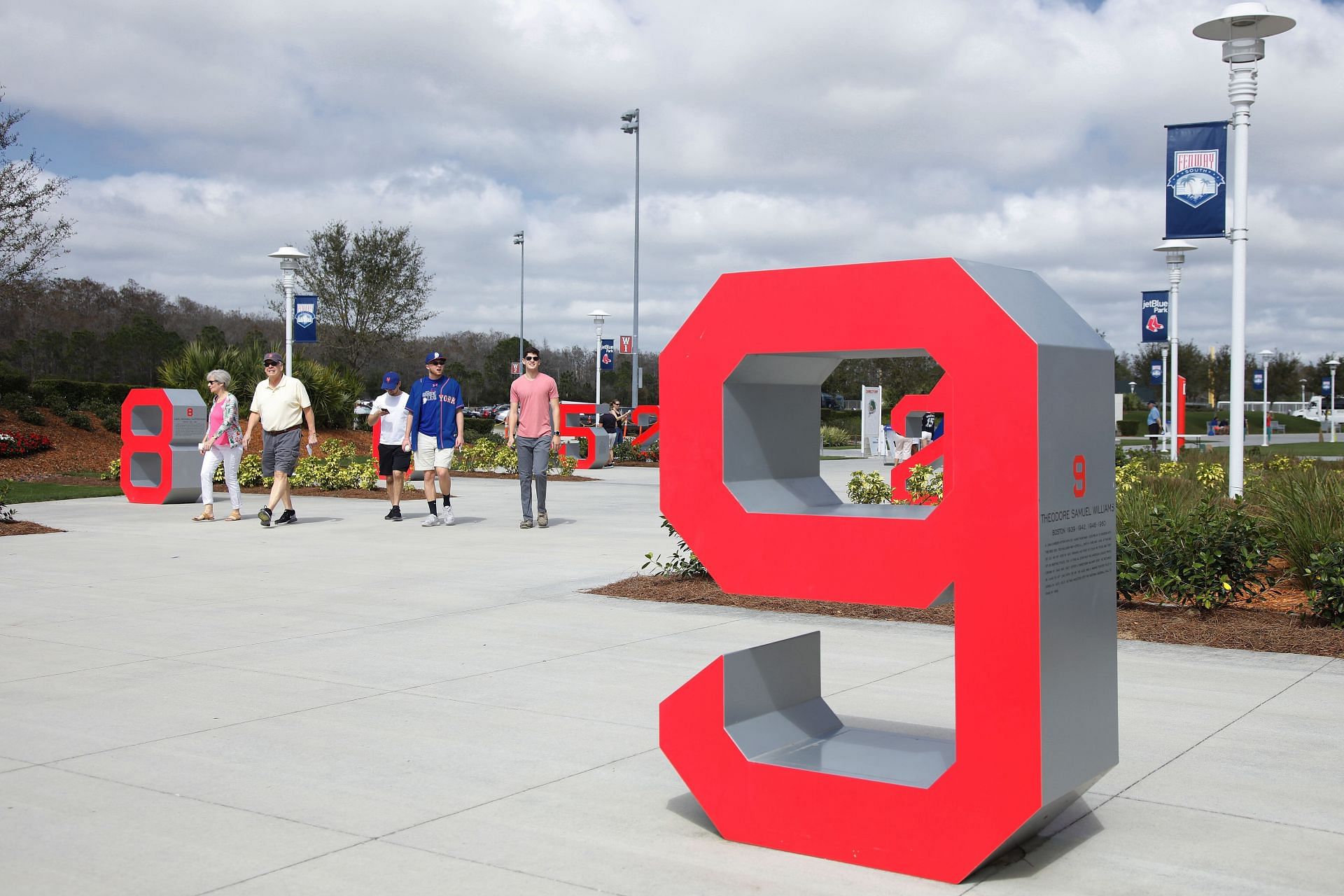
Boston Red Sox legend Ted Williams: The making of baseball’s greatest hitter
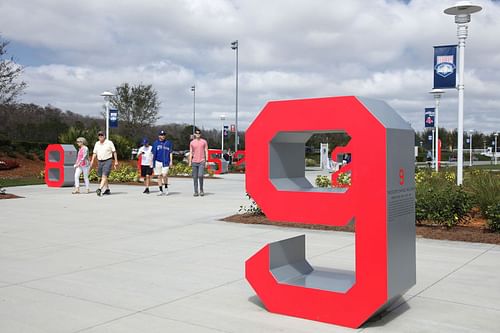
As a lifelong member of the Boston Red Sox, Teddy Ballgame's approach to hitting was a personal glimpse into the mind of the very man himself, Ted Williams. The same mindset he utilized at the plate was the same standard he set for himself in every facet of life. It was this meticulous approach to every task that drove him to succeed at everything he did. What was this mindset, and how did he use it to fuel his greatness? His life and career tell the story of what made the greatest hitter of all time. Today, we take a glimpse into what made Ted Williams the best.
The Making of a Boston Red Sox Legend
A bitter-fueled childhood
To see what formed the greatest legend in Boston Red Sox history, you need look no further than his childhood. Ted grew up with an alcoholic father and an overly dedicated Salvation Army mother who was "too busy saving the world," as Ted put it, to keep her own family in order. So Ted was left to fend for himself with a father and mother who were rarely home. It was these developmental stages of his life that allowed Ted to develop his love of hitting. Williams’ way of coping with his lack of family structure was to replace it with a solid baseball foundation. He funneled the bitter resentment of his upbringing into perfecting his swing at the local San Diego parks at a young age. Little did those around him know this sad, yet vital precedent laid the foundation for not only the greatest hitter the Boston Red Sox had ever seen, but all of baseball's greatest hitter.
A student of hitting

Williams had hitting down to a science, a science that reflected itself in his flawless picture-perfect corkscrew swing.
"Great shot of classic Ted Williams swing." - @ OldTimeHardball
As one of the first players to approach the plate analytically, he picked pitchers apart with his mind while his swing did the rest. Pitch-by-pitch, the Boston Red Sox slugger took note of pitchers’ arsenals, what pitches they would throw, and when they would throw them. By keeping a mental database, nine times out of 10 he knew what type of pitch was coming before the ball left the pitcher's hand.
Ted Williams was so ahead of his time in his hitting approach that it often came across as quirky to coaches and teammates. In an era where most major league hitters preferred large, heavy bats for power, Williams chose the opposite. He insisted on using the lightest bat he could find to improve bat speed through the strike zone. For Williams, the bat had to weigh 32 ounces, not an ounce too heavy or an ounce too light. This is one of the many concepts he cites in his book, "The Science of Hitting." His hitting philosophy even defies many modern teachings of the level swing. Ted adamantly preached that a slight upswing is the best way to magnify a hitter's ability.
Williams, the perfectionist
For Ted Williams, good wasn't good enough. He had to be great. Ted was the 1% who thrived in the face of the seemingly unrealistic standards he placed upon his own shoulders. Even with the prospect of hitting .400 in 1941, Ted refused to back down from a challenge. That season, the Boston Red Sox approached a season-ending doubleheader. Ted, aka Mr. Ballgame, was batting exactly .400 at the time, when Boston Red Sox manager Joe Cronin offered Williams the day off. His name would still have resided in the record books as the last .400 hitter if he had accepted that offer, but for Teddy Ballgame, sitting was unacceptable. He proclaimed he "wasn't going to hit .400 sitting down." The rest is history as Ted, the perfectionist, went 6-for-8 to finish the season with a .406 average.
Though his focus was always hitting, Ted performed every task with the intent of excelling. That's exactly what he did, not only in baseball but also in service to his country during World War II and the Korean War. Teddy Ballgame became Ted Williams, the Marine Fighter pilot in 1943. Not many people can say they were good enough to be John Glenn's wingman–that is, except for Ted Williams.
"Ted Williams was John Glenn's wingman during Korean War"-@ Michael Beschloss
Williams the war hero, much like Williams the baseball player, settled for nothing less than the best. Despite having his three most prime baseball playing years stripped from him, he returned in 1946 true to form. Though his .342 average, 38 HRs, and 123 RBIs were impressive, his stats for the seasons following his service in the Korean War were even more impressive. In the four seasons following his return to the Boston Red Sox lineup in 1954, he hit no lower than .345.
"If you think 'Eh, he was 34 anyway': Hit .345, .356, .345, .388 his first four years after Korea - @ Super 70s Sports
Because of his perfectionist mindset, everything Ted touched turned to gold. His five years lost to service are also the reason his 521 career home runs cannot be taken at face value. The fact that he even reached the 500 career mark in his career is nothing short of amazing.
A mutual disdain for press and fans
It didn't take long for Ted's bitterness from his upbringing to transfer to the fans and the press, but this bitter feud equipped his quiver as an additional arrow to perform even better. In his sophomore season, after being booed for what fans considered a less than enthusiastic effort to catch a fly ball, Williams vowed never to tip his cap to Boston Red Sox fans. This initiated what would become a love/hate relationship between the Boston Red Sox legend and fans for decades to come. From that moment on, the press grew even more brutal. They seemed to enjoy poking the bear just to get a rise out of him and then report his rage-fueled response the next day. However, the press, specifically the Baseball Writers Association of America, exacted their revenge most directly by refusing to grant Williams MVP honors in each of his two Triple Crown-winning seasons.
But the more the press hated him, the more Ted talked with his bat. He thrived on their hatred as much as he thrived on his disdain for the press. This was evidenced by his innumerable spitting gestures toward the press box after a home run. Nothing fazed Williams. If anything, it fanned his flame.
A fitting end and reconciliation

In an ending no fairytale could pen, Williams concluded his career on a climax worthy of the greatest. In his final at-bat, Teddy Ballgame's send-off was a home run.
"Ted Williams after hitting a home run in his final MLB at-bat, 1960" - @ Baseball In Pix
As Ted rounded the bases to a thunderous crowd at Fenway, many wondered if he would break his vow never to tip his cap. According to Williams, it was hardly an afterthought.
"I might have given it a faint thought, but that was it," Williams told a reporter in a late-1990s interview. Despite the rollercoaster relationship he had with Boston Red Sox fans, they loved him, and whether he wanted to admit it or not, he always loved them too. He finally had the chance to express that love long after retirement by tipping his cap "to all of New England" for the first time in over 50 years.
"Ted Williams tips his cap to the Fenway crowd" - @ NESN
For Ted Williams Day at Fenway Park in 1991, Ted finally broke his vow by tipping his cap to Boston Red Sox fans around the world. In doing so, he reconciled himself to who he called "the greatest baseball fans on Earth."
Major League Baseball has never seen and may never see a hitter or chatacter as great as Williams. Ted didn't allow his abandoned upbringing or discouragement from the press to hamper him. Instead, Williams used his less than fortunate background as an accelerant to become the greatest hitter who ever lived.
